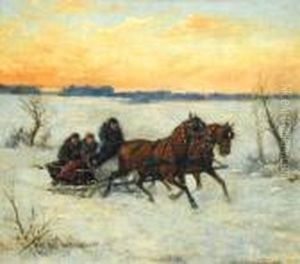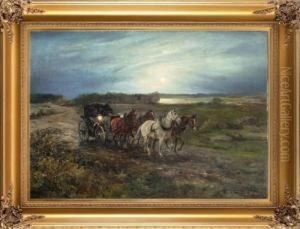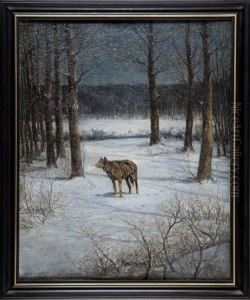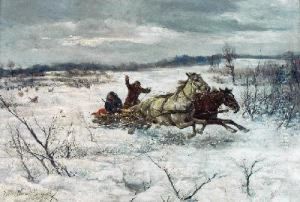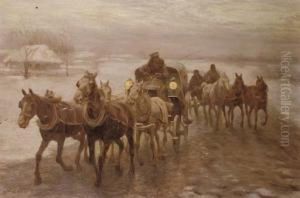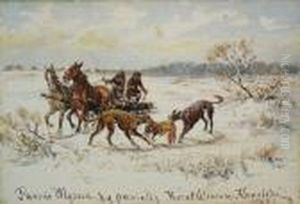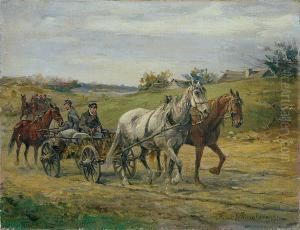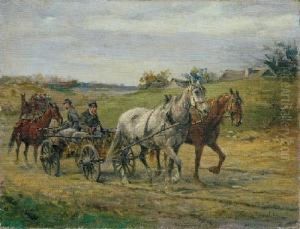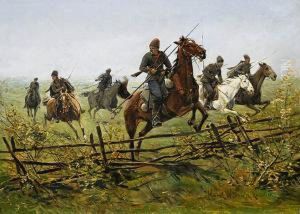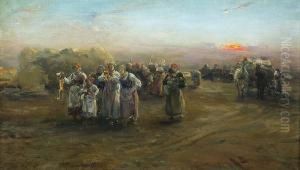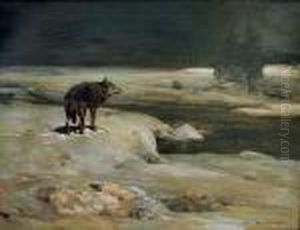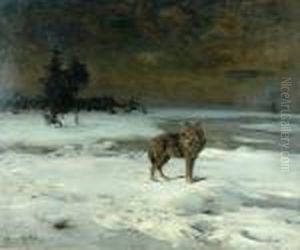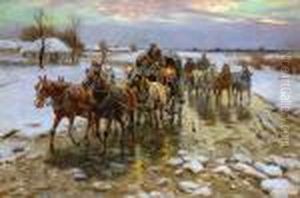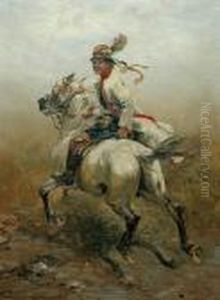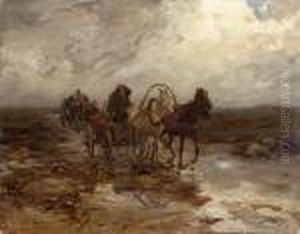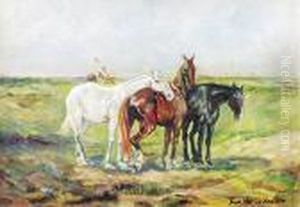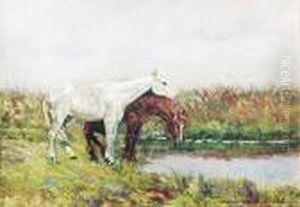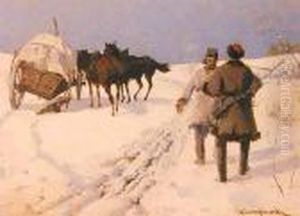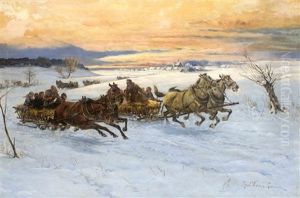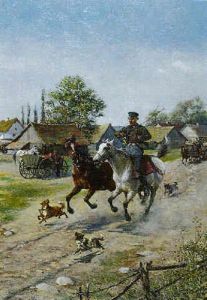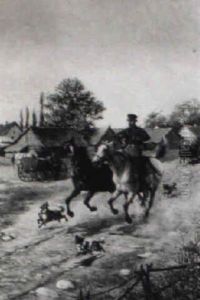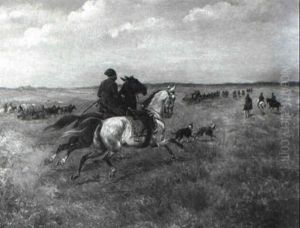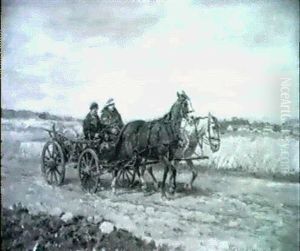Karol Wierusz-Kowalski Paintings
Karol Wierusz-Kowalski was an esteemed Polish painter, born on November 11, 1849, in Suwałki, Poland. He is particularly renowned for his dynamic portrayal of animals, especially wolves, in their natural surroundings, as well as for his vivid depictions of rural life in Poland during the 19th century. Wierusz-Kowalski's artistic journey commenced at the Warsaw School of Drawing, followed by his studies at the Academy of Fine Arts in Munich, where he was profoundly influenced by the realistic and detailed style characteristic of the Munich school.
During his time in Munich, Wierusz-Kowalski honed his skills in painting and developed a keen interest in depicting scenes of rural life, including the interactions between humans and animals. His artworks often featured dramatic narratives, showcasing his ability to capture both the beauty and brutality of nature. One of his most famous works, 'The Wolf's Trail,' exemplifies his mastery in illustrating the tension and fear in a pack of wolves pursuing their prey.
Wierusz-Kowalski's work gained significant recognition in Poland and abroad, making him one of the most celebrated Polish artists of his time. Despite his success in Germany, he maintained a strong connection to Poland, often returning to his homeland to find inspiration for his paintings. He was an active participant in the Polish artistic community, contributing to the development of art in Poland through his involvement in various artistic societies and exhibitions.
After a prolific career, Karol Wierusz-Kowalski passed away on April 3, 1929, in Munich, Germany. His legacy is preserved through his extensive body of work, which continues to be admired for its technical prowess and emotional depth. Wierusz-Kowalski's paintings are held in high esteem and can be found in museums and private collections around the world, serving as a testament to his enduring impact on the world of art.
